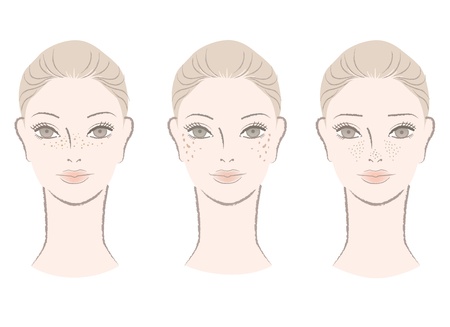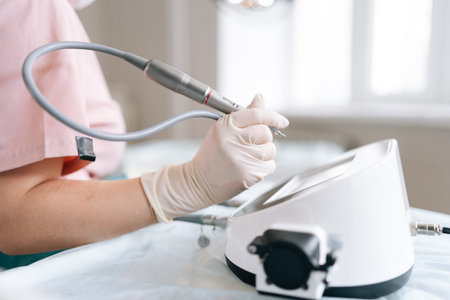1. Understanding Laser Hair Removal Technology
Laser hair removal is a popular treatment in the United States for people who want smooth, hair-free skin. Whether you’re looking to get rid of facial hair, underarm stubble, or leg fuzz, it’s important to understand how this technology works and what makes it effective for different skin types.
How Does Laser Hair Removal Work?
The process uses focused beams of light—lasers—that target the pigment (melanin) in your hair follicles. When the laser is applied to your skin, it’s absorbed by the darker pigment in the hair, which heats up and damages the follicle. This damage slows down or stops future hair growth, leaving your skin smoother over time.
Types of Lasers Used
Not all lasers are created equal. Depending on your skin tone and hair color, certain laser types work better than others. Here’s a simple breakdown:
| Laser Type | Best For | Skin Tone Compatibility |
|---|---|---|
| Alexandrite Laser | Quick treatments on larger areas like legs or back | Light to olive skin tones |
| Diode Laser | Versatile use on both light and medium-dark skin tones | Fair to medium skin tones |
| Nd:YAG Laser | Deeper penetration for coarse or thick hair | Darker skin tones (safe for all but especially recommended for deep complexions) |
| Ruby Laser | Smaller areas and fine hair | Pale skin tones only (not safe for darker complexions) |
How Lasers Target Hair Follicles Safely
The key to safety and effectiveness is matching the right laser type with your unique combination of skin tone and hair color. American dermatologists often use advanced cooling devices or gels during treatment to protect your skin from heat while maximizing results. By choosing an experienced provider who understands these differences, you can feel confident that your treatment will be as comfortable—and successful—as possible.
2. Skin Types and Laser Compatibility
If you’re considering laser hair removal, it’s important to know that your skin type plays a big role in how effective and safe the treatment will be. In the United States, dermatologists often use the Fitzpatrick scale to classify different skin tones and types. This helps them choose the right laser technology for each person.
What is the Fitzpatrick Scale?
The Fitzpatrick scale is a system that categorizes skin based on its color and how it reacts to sun exposure. There are six types, from very fair (Type I) to very dark (Type VI). Here’s an easy guide:
| Fitzpatrick Type | Skin Tone | Typical Reaction to Sun | Laser Hair Removal Considerations |
|---|---|---|---|
| I | Very fair, always burns, never tans | Always burns, never tans | Best results with traditional lasers like Alexandrite; low risk of pigmentation changes |
| II | Fair, usually burns, tans minimally | Usually burns, tans with difficulty | Good results with Alexandrite or Diode lasers; still low risk for side effects |
| III | Medium, sometimes mild burn, gradually tans | Sometimes mild burn, tans uniformly | Diode or Nd:YAG lasers work well; moderate care needed for settings |
| IV | Olive or light brown, rarely burns, tans easily | Rarely burns, tans easily | Nd:YAG laser preferred; minimizes risk of pigmentation changes |
| V | Brown, very rarely burns, tans profusely | Very rarely burns, tans easily and quickly | Nd:YAG laser is safest; lower risk of burns and discoloration compared to other lasers |
| VI | Dark brown or black, never burns, deeply pigmented | Never burns, deeply pigmented skin | Nd:YAG laser recommended; lowest chance of hyperpigmentation or burns when used correctly |
How Different Skin Tones Respond to Lasers
The main reason skin type matters is because lasers target pigment in the hair follicle. If there’s a big contrast between your hair color and your skin tone (like dark hair on light skin), the laser can more easily focus on the hair without affecting your skin. For those with darker skin tones, certain lasers are safer because they avoid targeting the melanin in your skin and focus more on the hair itself.
Lighter Skin Types (I-III)
Lighter skin types generally have fewer complications with traditional lasers like Alexandrite or Diode. These lasers are highly effective because there’s less melanin in the skin to absorb the laser energy—meaning fewer risks of burns or pigmentation changes.
Darker Skin Types (IV-VI)
Darker skin has more melanin, so it’s essential to use a laser that won’t accidentally damage the surrounding skin. The Nd:YAG laser is often considered the gold standard for these skin types in American clinics because its wavelength penetrates deeper without getting absorbed by surface pigment.
Avoiding Side Effects: Why Matching Matters
Picking the right laser for your skin type not only makes your treatment more effective but also lowers risks like burns or unwanted changes in skin color. That’s why it’s super important to see a licensed provider who understands these differences.

3. Best Laser Options for Various Skin Tones
Choosing the right laser hair removal device depends a lot on your skin tone. Not every laser is safe or effective for everyone, so it’s important to know which type is best suited for you. Here’s a quick breakdown of the most popular lasers used in the U.S. and which skin tones they work best for.
Popular Laser Types and Their Best Matches
| Laser Type | Best For | Safety & Effectiveness | Common Brand Names |
|---|---|---|---|
| Alexandrite Laser (755 nm) | Lighter skin (Fitzpatrick I-III) | Very effective; can cause pigmentation changes in darker skin | Candela GentleLase, Cynosure Apogee |
| Diode Laser (800-810 nm) | Lighter to medium skin (Fitzpatrick I-IV) | Versatile and commonly used; safer than Alexandrite for olive skin | Lumenis LightSheer, Soprano ICE |
| Nd:YAG Laser (1064 nm) | Darker skin (Fitzpatrick IV-VI) | Safest for deeper skin tones; less risk of burns or discoloration | Candela GentleYAG, Cutera Excel HR |
| Ruby Laser (694 nm) | Very fair skin (Fitzpatrick I-II) | Mainly outdated; higher risk of side effects for darker skin types | EpiTouch Ruby, Palomar E2000 |
How to Pick the Right Laser for Your Skin Tone
- Lighter Skin: Alexandrite lasers are typically the top pick because they quickly target hair pigment without much risk to lighter complexions.
- Medium Skin: Diode lasers work well here—they balance power with safety, making them a go-to choice in many American clinics.
- Darker Skin: Nd:YAG lasers are highly recommended. They penetrate deeply and are less absorbed by melanin in the skin, reducing the chance of burns or hyperpigmentation.
Your Provider Matters!
No matter your skin tone, always choose an experienced provider who understands how to match the right laser to your complexion. This ensures both safety and great results.
4. What to Expect: Safety and Results
Understanding Common Side Effects
Laser hair removal is generally safe, but like any cosmetic procedure, it comes with some possible side effects. Most are mild and temporary. Heres a quick overview:
| Side Effect | Description | How Long It Lasts |
|---|---|---|
| Redness and Swelling | The treated area may look a bit red and puffy, similar to a mild sunburn. | A few hours to a couple of days |
| Sensitivity or Discomfort | You might feel tingling or slight discomfort during and after the treatment. | Usually resolves within hours |
| Temporary Pigment Changes | Skin may darken (hyperpigmentation) or lighten (hypopigmentation), especially in people with darker skin tones. | Can last weeks or months; often fades over time |
| Blistering or Crusting (Rare) | Occasionally, blisters or scabs may form if the skin reacts strongly. | A few days; consult your provider if this happens |
The Importance of Choosing Professional Providers
For safe and effective results, its essential to get laser hair removal from a licensed professional. Board-certified dermatologists and experienced medical providers know how to choose the right laser for your skin type, adjust settings safely, and reduce risks. Avoid cheap clinics or home devices that arent FDA-approved—they might cause burns, scars, or unsatisfactory results.
Why Professional Care Matters:
- Personalized Assessment: Pros can determine which laser works best for your unique skin tone and hair color.
- Proper Equipment: Medical offices use advanced lasers that are more effective and safer than most at-home devices.
- Emergency Support: If you have an unexpected reaction, professionals know how to handle it quickly.
Realistic Outcomes for Different Skin Types
Your results depend on your skin tone, hair color, and the technology used. Here’s what you can expect by skin type:
| Skin Type | Treatment Effectiveness | Special Considerations |
|---|---|---|
| Lighter Skin with Dark Hair | Most effective; usually fewer sessions needed for long-lasting results. | Avoid sun exposure before/after treatments to prevent pigment changes. |
| Darker Skin Tones (Brown/Black) | Effective with specific lasers (like Nd:YAG); more sessions may be needed. | Choose providers experienced with treating diverse skin types to lower risk of pigment changes. |
| Lighter Hair (Blonde, Red, Gray) | Treatments are less effective; some lasers may not work at all on very light hair. | Your provider might suggest alternative options or combination therapies. |
Keep in Mind:
- No laser guarantees 100% permanent hair removal.
- You’ll likely need multiple sessions—usually 6-8—for best results.
- Maintenance treatments may be necessary once or twice a year.
- Your provider will give you aftercare tips to help your skin heal and prevent side effects.
5. Tips for Choosing a Licensed Provider
Finding the right clinic for your laser hair removal journey is key, especially when you have specific skin type needs. Here’s how to make sure you’re in good hands and set yourself up for a great experience.
Check Licenses and Certifications
Always start by verifying that the provider is licensed and certified to perform laser treatments in your state. In the U.S., requirements can vary, but most states require clinics and technicians to have specific training and credentials. Don’t be shy—ask to see their certifications!
Look for Experience with Your Skin Type
Laser technology has advanced, but some clinics still specialize in certain skin tones or hair types. Ask if they’ve treated clients with similar skin and hair as yours, and which devices they use. A reputable provider should have experience with Fitzpatrick skin types I-VI (from very fair to very dark skin).
Fitzpatrick Skin Type Chart
| Skin Type | Description | Best Laser Options |
|---|---|---|
| I-II | Fair, burns easily | AleXandrite, Diode |
| III-IV | Medium, sometimes burns | Diode, Nd:YAG |
| V-VI | Darker skin, rarely burns | Nd:YAG |
Read Reviews and Ask for Referrals
Online reviews on platforms like Google, Yelp, or RealSelf can reveal a lot about customer satisfaction and outcomes. If possible, ask friends or family who’ve had successful treatments for their recommendations.
Schedule a Consultation First
A quality clinic will offer a consultation before starting any treatment. Use this time to ask questions about their approach for your skin type, see the facilities, and discuss any concerns.
Questions to Ask During Consultation:
- What lasers do you use for my skin type?
- How many sessions will I need?
- What are the risks or side effects?
- Can I see before-and-after photos of similar clients?
- Who will be performing my treatment?
Prioritize Safety and Comfort
Your safety should always come first. Make sure the clinic follows proper hygiene protocols and makes you feel comfortable. Trust your instincts—if something feels off, it’s okay to look elsewhere.


